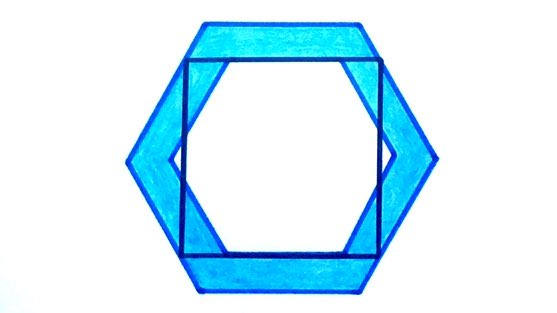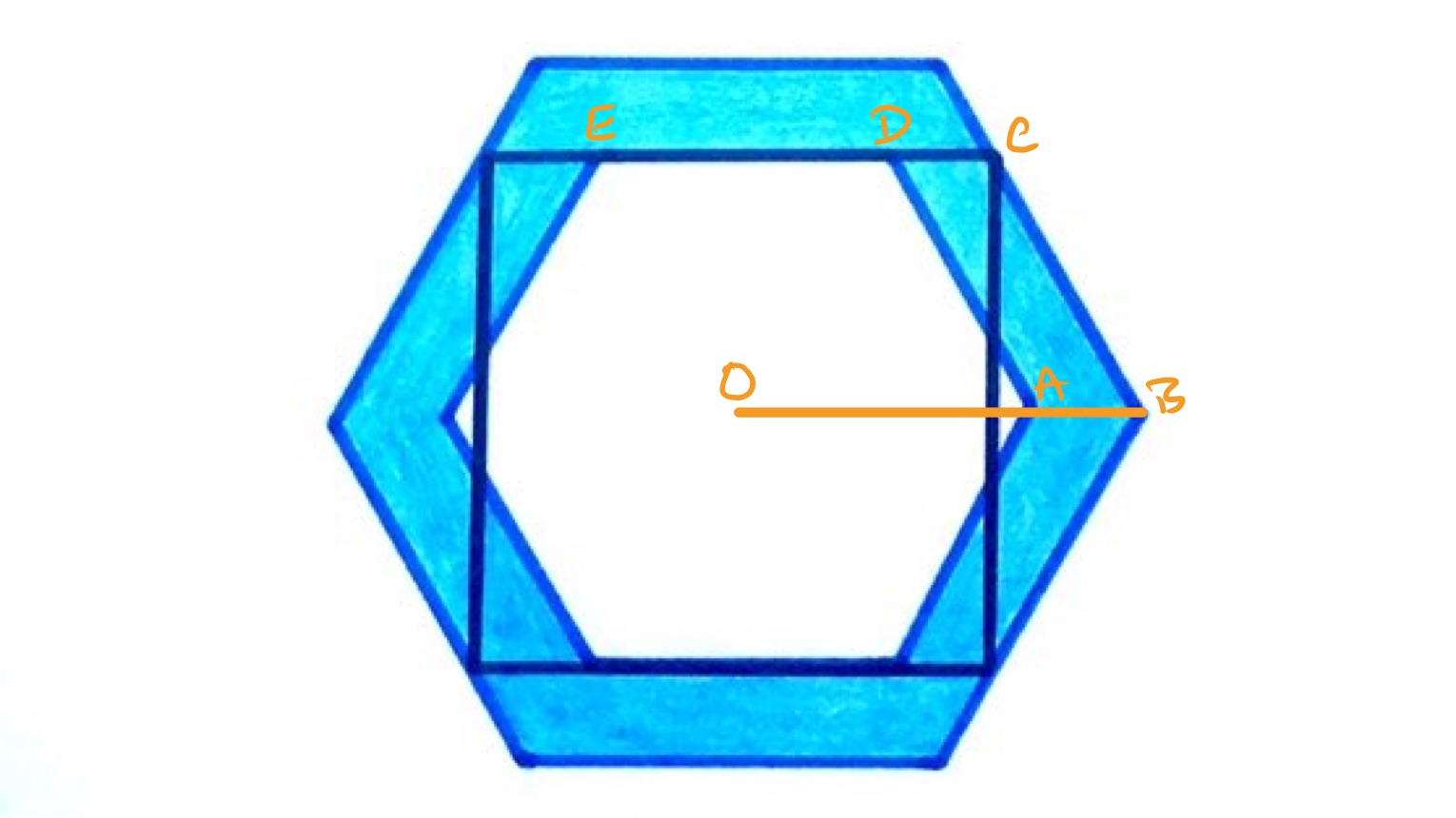Notes
two hexagons and a square solution
Solution to the Two Hexagons and a Square Puzzle

Two regular hexagons, and a square of side length . What’s the shaded area?
Solution by Lengths in a Regular Hexagon

The side length of the square is the same as the smaller diameter of the inner hexagon, which is times the side length. So the side length of the inner hexagon is . The excess is half of what is left over, so has length:
This is the same as the length of . Since the length of is the same as the side length of the inner hexagon, the length of , which is the same as the side length of the outer hexagon, is:
The area of a hexagon is times the square of its side length, so the area of the shaded region is: